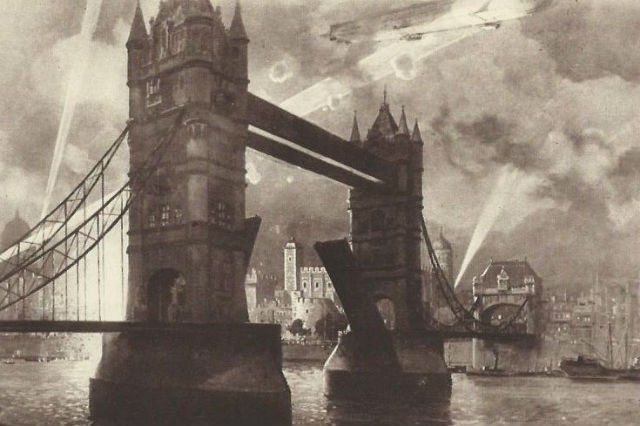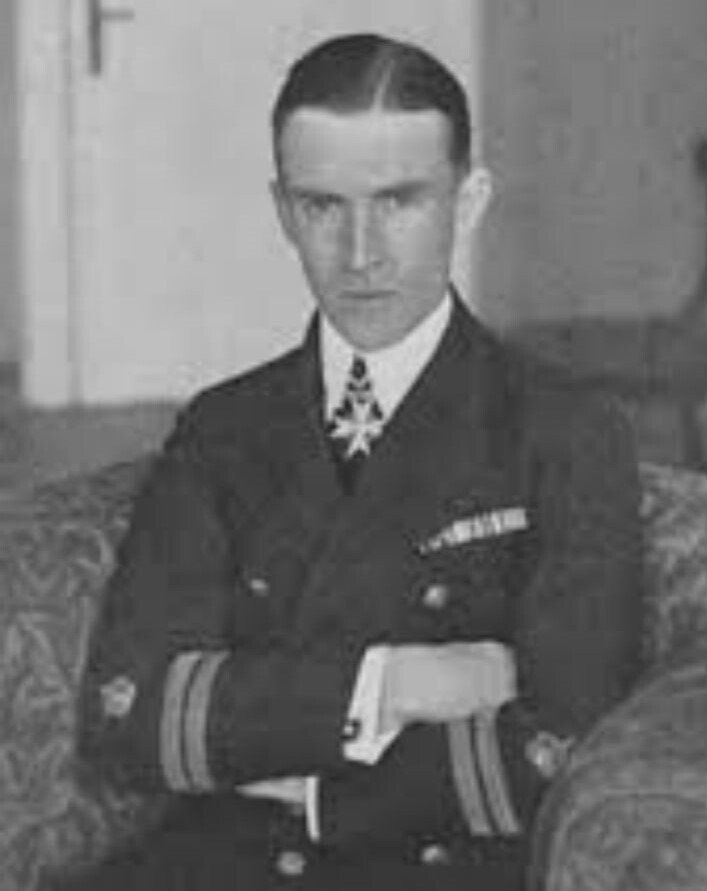ZEPPELINS, GOTHAS & 'GIANTS'
THE STORY OF BRITAIN'S FORGOTTEN BLITZ 1914-1918
17 August 1915
Bombed:
London, Essex & Kent
This latest attempt by the German Naval Airship Division finally saw one of their Zeppelins reach London and match the Army airship record. Four Zeppelins set out but two, L 13 and L 14, turned back with engine problems.
Zeppelin L 10, commanded by Oberleutnant-zur-See Friedrich Wenke, came inland near Sizewell and followed the Suffolk coastline down to Shingle Street where it turned inland. Near Ardleigh, northeast of Colchester, it dropped a parachute flare or incendiary, without damage, and followed the railway line as it passed through Colchester, Witham and Chelmsford, then turned west and headed towards Waltham Abbey. There, a couple of rounds from an AA gun sent L 10 on its way as it turned south towards London. The first bomb dropped on Lloyd Park, Walthamstow, followed by a string through Leyton and Leytonstone. These landed on Hoe Street, Bakers Avenue, Lea Bridge Road, Dunton Road, Farmer Road, Leyton High Road (bombs killed four near the Midland Road station), Midland Road, Moyers Road, Grosvenor Road, Claude Road (three killed), Murchison Road, Albert Road, Twickenham Road, Oakdale Road (two killed), Ashville Road, Grove Green Road, Lincoln Street, Mayville Road and Southwell Grove Road (one killed). The final bombs landed on open ground on Wanstead Flats. Besides the ten killed, 48 civilians sustained injuries. The first bomb dropped at 22.32 and the last at 22.43. The greatest concentration of bombs dropped around the Lea Bridge Road where they demolished four flats at Bakers Almshouses and caused significant damage to tramlines as well as to the Leyton tram depot. Elsewhere, fire gutted St. Augustine’s church on Lincoln Street and hundreds of other houses suffered broken windows.
From Wanstead, L 10 returned to the coast, dropping two explosive bombs at Chelmsford on the way: one at Admiral’s Park, west of the town, which gouged a five-foot deep crater, and the other at Glebe Road in the town, which crashed through a house but failed to explode.
L 10 encountered limited anti-aircraft fire and, although two RNAS aircraft from Chelmsford, one from Holt and three from Yarmouth were in the air, sightings were limited and two of the aircraft crashed on landing.
In his report on the raid, Wenke described bombing the north bank of the Thames between Blackfriars and London Bridge. A German newspaper printed this picture to celebrate the mission and a commemorative medallion based on the picture was also produced. Wenke's navigation, however, was out that night and it seems likely that he mistook the line of reservoirs in the Lea Valley for the Thames. His bombs fell mainly on Leyton and Leytonstone in north-east London.
The other Zeppelin which came inland on 17 August, L 11, commanded by Oberleutnant-zur-See H von Buttlar, did so over Herne Bay at about 21.30 – causing some panic on the pier - and meandered over Kent for just over two hours. Passing over Canterbury, L 11 headed towards Faversham before turning south. Having flown over Ashford, von Buttlar then circled back and dropped two explosive and 19 incendiary bombs on the town. Two incendiaries fell in Lower Queen’s Road and six fell in two gardens close by, with another dropping in the neighbouring cemetery. The rest were dropped as L 11 continued on a westward path: nine incendiaries and two explosive bombs fell in fields at Barrow Hill owned by a Mr Bridge, killing sheep and a couple of hens, and one incendiary fell in the grounds of a sanatorium on the Maidstone Road.
L 11 then turned northwards and released 16 explosive and 25 incendiary bombs over the countryside south of Faversham, between the villages of Badlesmere and Sheldwich. Of these, one explosive and 10 incendiaries were recorded falling in woods at Sheldwich Lees, and 10 explosive and eight incendiaries near a V.A.D. hospital (probably Lees Court). The only damage recorded was broken windows – including at Badlesmere church. L 11 passed out to sea again over Herne Bay at about 23.35, having caused no casualties and negligible damage, and was sent on her way by 420 rounds of small arms ammunition fired by the 42nd Provisional Battalion.
The AA gun at Faversham Powder Works did not engage L 11 as the manager of the works cut the power to the searchlight, believing it would draw attention to this vital establishment.
Horst Freiherr Treusch von Buttlar-Brandenfels
Casualties: 10 killed, 48 injured
Damage: £30,750
Follow Us
© Ian Castle 2021

